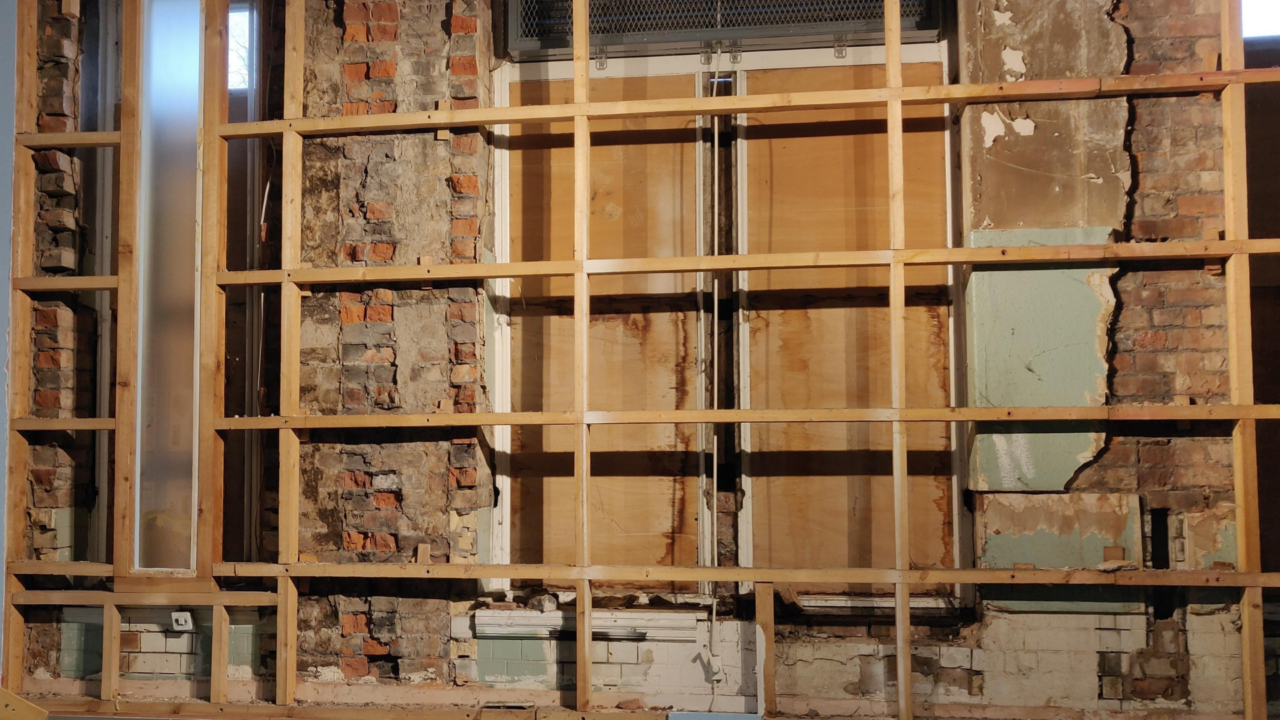- Posted on April 5th, 2022
Z-Arts – Improving energy & resource efficiency

Manchester based Z-Arts is an arts and creative hub for young people, with a theatre, gallery, music studio and rehearsal spaces.
Z-Arts zero carbon journey
Z-Arts has experienced significant disruption to our normal patterns and processes in the pandemic years. During the lockdown period in 2020-21, Z-arts remained open to local authority building contractors as well as other maintenance and compliance-related contractors.
Here are some capital development improvements we are making to improve energy efficiency, make our building COVID-19 safe and reduce our carbon footprint funded by internal reserves, Manchester City Council through the Manchester City Council programme and Cultural Recovery Fund from the DCMS.
New air handling and ventilation for Z-Arts Galleries
In 2020, we drew on our core reserves to fund installation of two air handling units in our Main Gallery which, although these met exceptional environmental efficiency standards, were a new addition to our energy consumption. The work was carried out once funding was secured, in March 2021.
In tandem with this we installed new double-glazed windows into all of our Side Galleries with natural ventilation designed in to meet Covid-safe criteria with a zero-carbon cost.
New sustainable Basement Toilets suite
A major refurbishment that will assist in reducing our carbon footprint is the new basement toilet suite which replaced the old faulty infrastructure back in Spring 2021. The new system is a complete, ground-up installation and involves high-efficiency LED lighting, high-efficiency hand dryers, a sophisticated but low energy hot water system generated by a single internal air-source heat pump.
All of the above (including the hot water circulation) are triggered by movement sensors and therefore whenever un-occupied, the space remains on standby consuming very little energy. Water consumption is also reduced as all of the toilets are now sensor/valve operated requiring far less water to achieve required result.
Toucan Eco cleaning technology
We invested in new cleaning technology which enabled us to both meet our Covid-secure criteria as well as effect a significant reduction in environmental impact in a variety of ways. This was through installation of a Toucan Eco cleaning fluid machine. This produces in-house cleaning fluid that replaced nearly all of our conventional hard-surface cleaning products.
A significant carbon footprint is generated by the transport miles incurred in delivery of our previous fluid-based products. This has been reduced to almost zero by using our own water supply to create the product on-site. Despite its potency to kill COVID-19 virus and other pathogens, it is hypoallergenic and can be used to wash one’s vegetables and fruit before consumption.
It should be added that the initial inspiration came from knowledge shared via the GMAST network and in particular, the team at HOME who had made their investment prior to the arrival of Covid-19.
Manchester city programme
Due to funding made available to Manchester City Council from central government for zero-carbon capital works, the following has been researched by sustainability consultants (Ameresco) on behalf of MCC.
The below capital development projects will serve to reduce our carbon-footprint but it should be pointed out that although we are consulted on some of the detail, we are not the client and have limited say in what is being delivered. MCC is its own client for the above projects. The following large works are currently in progress.
New roofs for entire building
Manchester City Council are in the process of replacing our 110-year-old roof with new and are upgrading the insulation by almost a 10-fold factor in most areas.
The existing ‘cold’ roofs are having their existing insulation replaced and increased, together with former design failures being addressed – open ventilation routes have been discovered between the ‘cold’ and ‘warm’ roofs meaning internal heat was being wasted through the cold roofs over the top of the existing insulation. These routes are being sealed/blocked as they are discovered through the delivery of the project.
Remedial works were carried out in Summer 2020 but the definitive works started in August 2021 and are still ongoing. These are currently scheduled to be complete by May 2022.
Single to triple glazing windows
The old glazed skylights, which contribute significant surface areas in the large public areas and atriums, are being replaced with triple-glazed units (currently single glazed). It is anticipated that this will have a similar contribution to reducing heat-loss as the roof insulation works.
All windows on the West, South and Inner Courtyard are being changed from end-of-life single-glazed units to high efficiency triple glazing which will enable natural ventilation all year and night-time cooling in Summer.
Solar energy generation
A significant solar power scheme is being installed on some of the flat and sloping roofs – this will contribute to our internal supply and reduce the amount we draw from the electric grid.
It will also mean we are able to contribute to the local area grid at times when we are shut or not drawing on that initial supply, so we will effectively become a micro-generator. Local battery storage will be used to ensure no generated energy is wasted.
LED Lighting
All of our architectural (internal & external) lighting is being replaced with high efficiency LED. This is being sourced from a locally-based manufacturer and installed by a local supplier, thereby keeping the carbon-footprint of the supply-chain to a minimum, rather than relying on products imported from China and other long distance supply routes.
Zero carbon works – air handling/heating
The largest and most inefficient air handling unit which serves the front atria of the building has been scrapped and is being replaced with a modern Air Source heat pump.
Image credit: Steve Curtis, window construction, Z-Arts

